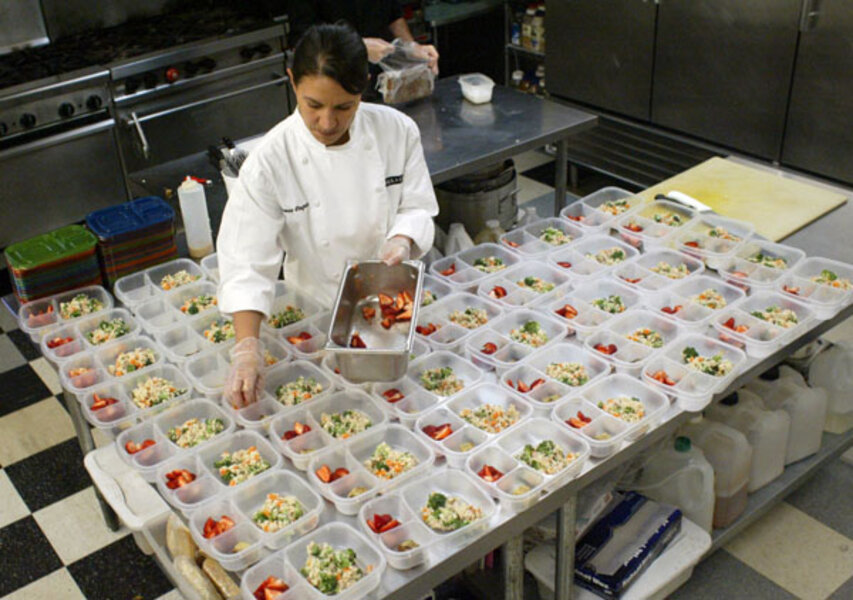Holiday feasts: A time for families to talk about reducing food waste
Loading...
Families are finalizing plans for December holiday celebrations, even as kids are scraping the very bottom of their Halloween candy buckets and last month’s Thanksgiving turkey has roosted on parents’ backsides. And this is only the beginning.
The month of December is often a blur of latke platters, Christmas cookies, and endless feasting. While many families stuff themselves until they cannot eat another bite, others struggle to put food on the table.
While the disparities of those with excess and those in need becomes more pronounced during the holidays, the problems of hunger and waste are systemic and persist throughout the year.
On average, American families throw away a quarter of the food they purchase, 50 percent more than their 1970’s counterparts. For a family of four, that can mean that $2,000 worth of food ends up in the trash every year.
According to a recent study from the Natural Resource Defense Council (NRDC) , 40 percent of food produced in America never makes it to the table. At the same time, 47 million Americans depend on government assistance to put food on the table, according to August data from the U.S. Department of Agriculture.
As the NRDC report points out, agriculture and food production are resource-intensive enterprises, taking up half of all US land, accounting for 80 percent of the nation’s freshwater consumption, and representing 10 percent of the country’s entire energy budget.
Food lost at the consumer level represents an even greater waste of energy resources because it has been through all the links of the food chain from field, to processing facility, to truck, to store, to family minivan, burning through fossil fuels at every step of the way.
Families interested in reducing their waste stream can examine their shopping, cooking, and eating habits. Some families purchase more than they can eat and it spoils before cooking. Others pile too much food on their plates and scrape leftovers down the garbage disposal. Most families likely fall into both categories.
Once families start to pay attention when they waste food, they can make small changes in their habits that can lead to less waste in the trashcan and more money in the bank.
Getting kids on board, however, can take some careful planning.
With produce racks overflowing with food, and grocery aisles filled with disposable versions of pretty much all household goods, it can be difficult for kids to comprehend the value of food.
By starting a discussion about waste, parents can help to place value on food and start to provide some context for understanding hunger.
Many parents remember staying behind at their childhood dinner table until they had cleaned their plates because, “there are children starving in China that would be glad to eat that food.”
Today, parents are more likely to encourage children to listen to their bodies and avoid overeating. That’s an important message, especially in the midst of the current obesity epidemic. However, on its own, it can inadvertently promote food waste.
Parents can encourage children to start with smaller servings and assure them that if they want more they can come back for more. Some parents may find it useful to resurrect the clean plate rule, but with the message that kids should eat what they take, rather than eat everything parents serve up.
Taking the kids to hand out bowls at a soup kitchen or deliver food to a food pantry can help give the idea of hunger some context.
The Christian Science Monitor has assembled a diverse group of the best family and parenting bloggers out there. Our contributing and guest bloggers are not employed or directed by the Monitor, and the views expressed are the bloggers' own, as is responsibility for the content of their blogs.







